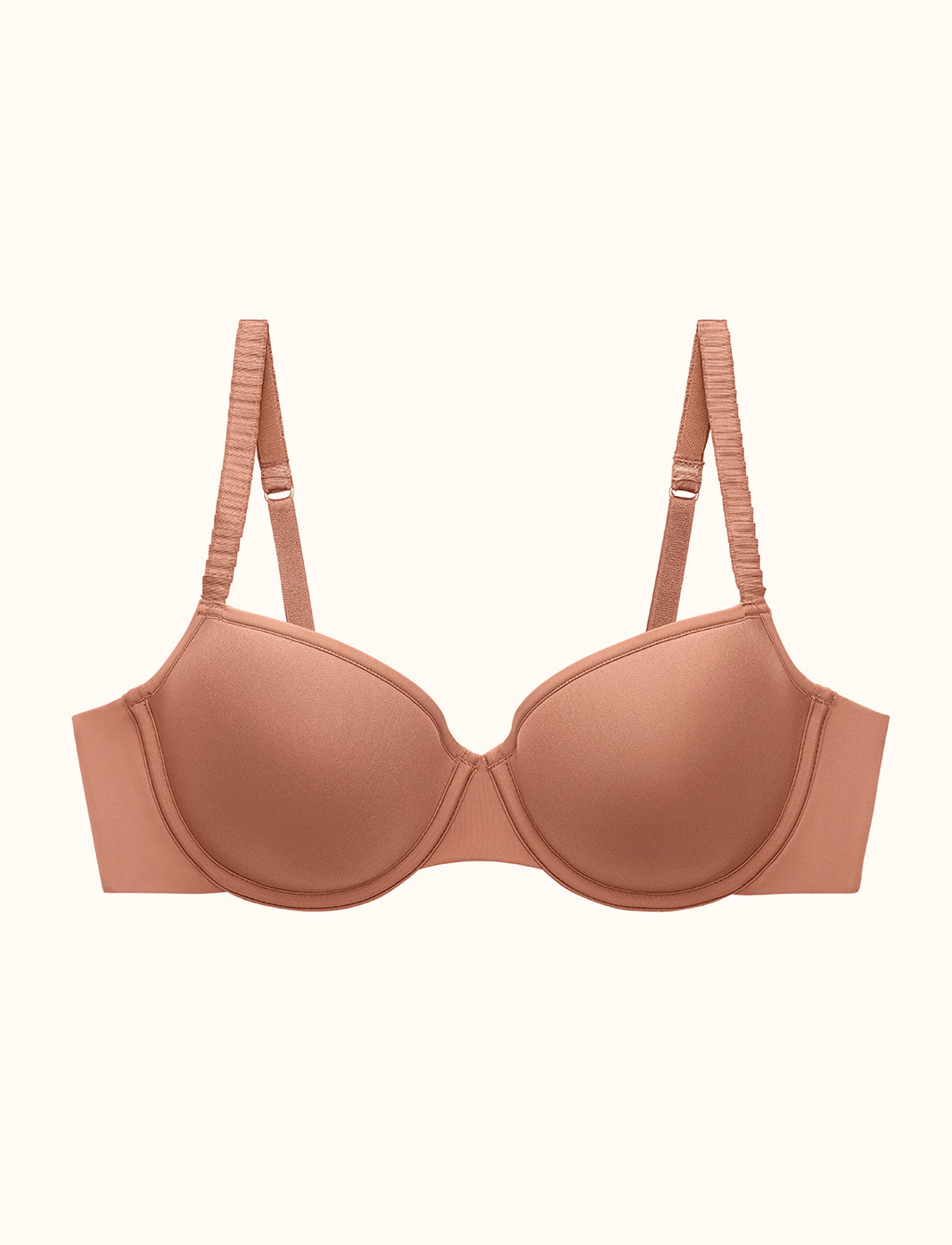Real Talk: How Pregnancy Affects Your Breasts

In the first of our four-part series on how your breasts change through motherhood, we’ll walk through the changes you can expect and how we can help along the way.
Of all the changes that accompany motherhood, one of the very first changes you may notice are breast changes in early pregnancy. Maybe they seem bigger, more sensitive, or just… different. In fact, your breasts can begin to show signs that they’re getting ready for baby’s arrival before you suspect a thing, as early as three weeks into pregnancy. (Apparently, my breasts were more organized and prepared for pregnancy than I was.)
Here are the five most common breast changes so you can be prepared, too:
1. Breast size during pregnancy – Size increase
During pregnancy, blood flow to your breasts increases as your body starts building up its milk ducts. This can cause your breasts to grow quickly, sometimes up to a full cup size in the first six weeks alone. However you may feel about having bigger breasts, the best way to comfortably roll with the changes is to find a supportive bra that fits well. Your pregnancy breast size will change and your ribcage will also expand as your belly grows, so you may need to increase your band size too.
2. Why do my breasts hurt? – Tenderness and itchiness
Early in pregnancy, your breasts can start to feel more tender and can cause some breast pain during pregnancy. Although you may experience sore breasts, it’s not always negative, as some women enjoy the increased sensitivity. After your first trimester, the tenderness begins to wane, and another sensation often moves in: itchiness. Your breasts and belly are growing, leaving your skin itchy. A soft bra (like those in our wireless collection) and good moisturizer can help.
3. New lines – Stretch marks on breasts
Your breasts, along with your belly, butt, thighs, and hips may all start to have some newfound natural art on them. We like to call them “tiger stripes”. Your veins can become more visible due to increased blood flow and you may develop stretch marks as your body expands to make room for another person. Both are external testaments to the amazing process happening inside you, and both become less pronounced in the weeks and months after delivery.
4. Nipple changes – Sore nipples
It’s not your imagination—if you’re pregnant, your nipples and areolas are likely darker, more prominent and bumpier than they were just a few weeks or months ago. All the pregnancy hormones swirling around in your body cause the changes in shape and texture, plus an increase in melanin, which deepens your skin’s pigment. But why? Although no one knows for sure, some experts think nipples change shape to help infants latch on while breastfeeding, and that darker nipples are easier to spot so newborns can find their next meal.
5. Is it normal to leak breast milk during pregnancy?
Because your breasts are at work even before baby arrives, colostrum, a nutrient-rich fluid that your body produces as a precursor to breast milk, can escape your breasts and soak through your bra or shirt. Nipple shields (absorbent bra inserts) or even a bit of tissue can protect your garments.
While these are the most common breast changes, not all of them happen to every woman, so they may not all sound familiar. Whatever breast changes you may be going through—pregnancy-related or not—we’re here to keep you comfortable and supported through it all. There are a lot of changes post-pregnancy and post-nursing as well, including breasts dropping and relaxing. Whether you’re starting a new journey into motherhood or are looking for ways to mitigate sagging after breastfeeding, we’re here for you!
P.S. Meet—and shop!—our newest delivery, the ThirdLove Nursing Bra Collection.
Additional reporting by Cathy Bishop.
Tags:


